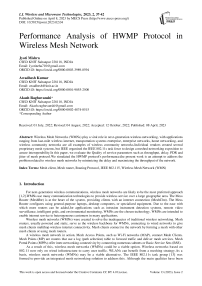Performance Analysis of HWMP Protocol in Wireless Mesh Network
Автор: Jyoti Mishra, Awadhesh Kumar, Akash Raghuvanshi
Журнал: International Journal of Wireless and Microwave Technologies @ijwmt
Статья в выпуске: 2 Vol.13, 2023 года.
Бесплатный доступ
Wireless Mesh Networks (WMNs) play a vital role in next-generation wireless networking, with applications ranging from last-mile wireless internet, transportation systems enterprise, enterprise networks, home networking, and wireless community networks are all examples of wireless community networks.Individual vendors created several proprietary mesh systems, but IEEE organized the IEEE 802.11s task force to design a meshed networking exposition to assure interoperability.In this paper, we evaluate the Quality of service parameters such as throughput, delay, PDR and jitter of mesh protocol.We simulated the HWMP protocol's performance,the present work is an attempt to address the problem related to wireless mesh networks by minimizing the delay and maximizing the throughput of the network.
Mesh client, Mesh router, Routing Protocol, IEEE 802.115, Wireless Mesh Network (WMN)
Короткий адрес: https://sciup.org/15019209
IDR: 15019209 | DOI: 10.5815/ijwmt.2023.02.04
Текст научной статьи Performance Analysis of HWMP Protocol in Wireless Mesh Network
For next-generation wireless communications, wireless mesh networks are likely to be the most preferred approach [1,2].WMNs use many communication technologies to provide wireless service over a large geographic area. The Mess Router (MeshRtr) is at the heart of the system, providing clients with an internet connection (MeshClnt). The Mess Router configures using general-purpose laptops, desktop computers, or specialized equipment. Due to the ease with which more routers can be added,for applications such as intrusion instrument detection systems, remote video surveillance, intelligent grids, and environmental monitoring, WMNs are the chosen technology. WMNs are intended to enable internet service to heterogeneous customers in many applications.
Wireless mesh networks (WMNs) were created to solve the inadequacies of traditional wireless networking. Mesh routers, usually powered and static, serve as the wireless backbone for WMNs, connecting to wired networks to give mesh clients multihop wireless internet connectivity. Mesh clients connect to the network by forming a mesh with other mesh clients or using mesh routers.
A wireless mesh network in action, Mesh Access Points, such as Wi-Fi networks (MAP), connect Mesh Clients. Mesh Points (MP) are routers that use a log (path selection) table to forward traffic and deliver mesh services. Mesh Portal Points (MPPs) offer inter-networking connectivity by connecting numerous subnets or Basic Service Sets (BSS).
As a result of this, wireless mesh networks (WMNs) could be a viable option. Wireless networks based on 802.11 now rely on wired infrastructure to carry user traffic. WLANs can benefit from a meshing strategy.As a basis, wireless mesh networks (WMNs) may be a viable alternative. The IEEE 802.11s task group [13] was formed to provide an integrated mesh networking solution to address this. Although the main qualities have been determined, the standardizing process is still ongoing. The work group picked the hybrid wireless mesh protocol (HWMP) [14] as the default routing protocol at the logical link layer. Metric is the default route metric
2. Motivation Behind This Work
An extensive study has focused onimplementing and analyzing the Quality of Service of WMNs with varied node densities.In this paper [4], the author calculated the Quality of service of 802.1s nodes compared to 802.11a/b/g nodes.They discovered that multi-hopping severely reduces IEEE 802.11n performance.
[5] Ref When numerous channels (multi-radio) are used concurrently over different frequency bands, network performance can be increased. However, for this mechanism to work well, the channel must be physically segregated from other channels. It is also worth noting that nodes can use channels [1-3,6-8,10-13] on several logical or physical radios at the same time.Multiple simultaneous communications over separate frequency domains are defined as a multiradio frequency-based communication model.
3. Contribution of Paper
4. Related Work
According to ref [7], supporting the radio frequency model over the current hardware model is a better way to boost performance. Radios, on the other hand, must be integrated into a single unit capable of operating over multiple frequency bands.HWMP [9] is outperformed by BATMAN [8]. According to the authors, massive networks have packet delay, performance issues, route maintenance overhead, and E-E delay. HWMP outperforms BATMAN in the case of a small network.
The literature[15-18] generally investigates a unidirectional flow with constant packet datagram size and baud rate to analyze the performance of the HWMP protocol and the airtime routing metric. On the other hand, the real-world scenario for a Wireless Mesh Network is significantly different. In a WMN, there could be several different forms of concurrent traffic flow, each with its characteristics (different applications, such as audio, video, email, FTP, HTTP). This research looks at the HWMP protocol's performance in various applications and traffic scenarios.
Wireless mesh network routing approaches and algorithms have recently received much attention [11]. Wireless mesh networks and mobile ad-hoc networks share some characteristics.As a result, many routing algorithms used in mesh wireless networks today are based on Mobile Adhoc Networks (MANETs).There are three routing protocols in wireless mesh networks: proactive, reactive, and hybrid. Before any data traffic flow, a proactive routing path is constructed between two nodes. Routing protocols keep track of all routes to destinations in a routing table, regardless of their use. A node sends control information regularly to keep the routing table current, squandering necessary bandwidth.These protocols, on the other hand, allowed a node to collect route information and start data traffic flow right away.
Hybrid routing systems mix reactive and proactive routing to improve network routing's overall scalability. Hybrid routing systems aim to apply proactive routing algorithms in selected areas of the network at specific periods while using reactive routing for the remainder of the network [19].
IEEE 802.11 Task Groups are formed to work on an integrated mesh networking system that benefits MAC-based WMN routing.The significant features of the standard have been established, even though it is not yet finalized. HWMP was chosen as the default routing protocol, while air time was chosen as the default routing measure by the workgroup. The radio routing protocol is an optional routing mechanism based on link-state routing.
The Per-Hop Packet Pair Delay [21] and Per RTT [20] algorithms were created to alleviate traffic load and queuing delays in two nodes on the network.On the other hand, their performance is heavily based on traffic volume, which can easily lead to route instability.Moreover, the Quality of the links is not included in these calculations. Because each routing metric only measures one or two aspects of network performance (delay, packet loss), numerous researchers have combined two or three routing measures to increase the routing protocol's performance. Arafatur Rahman et al. [22] supported merging numerous metrics into AODV, such as ETX, RTT, and Hop Count, to improve the protocol's end-to-end delay, jitter, and packet delivery ratio and throughput.
The HWMP [14] routing system is a hybrid tree-based routing system that combines reactive (on-demand) and proactive (ahead-of-time) routing.The RM-AODV (Radio-Metric Ad hoc On-Demand Distance Vector) routing is a version of the AODV (Ad hoc On-Demand Distance Vector) routing used in the reactive section of HWMP.The four control messages in HWMP are the root announcement (RANN), path request (PREQ), path reply (PREP), and path error (PRE) (PERR). Except for PERR, all control messages have three fields: the destination sequence number (DSN), time-to-live (TTL), and metric. DSN and TTL help avoid the difficulty of counting to infinity and the metric aids in discoveringa better routing path than the number of hops alone.These control messages serve as the foundation for the entire routing system.
A root node regularly provides PREQ messages with a unique sequence number in Proactive PREQ. The second node (MPs) receives the PREQ, logs the routing metrics, adjusts the PREQ (TTL, Hop Count, Path metrics), and sends it back to the root node, building a backward path. A forward path is established when the root node sets the Proactive PREP flag in the PREQ to 1 receiving an MP unicast RREP and building a bidirectional path to the root in advance. IF the PREP flag is not set, no PREP is transmitted in response to PREQ. Only when data from an MP has to be transferred is a forward path created.This is done to maintain a proactive approach to the root while path expenses are reduced.
5. Simulation Environment
The performance of the HWMP protocol is evaluated using the Qualnet 5.1[23] network simulator.We used a three-parameter to evaluate the Quality of services such as throughput, delay,jitter, and packet delivery ratio.In this scenario, we enhance the throughput and packet delivery ratio and try to minimize the delay and jitter.
With the received packet by transmitted packet*100 the parameter are deployed at random delay at first path request. The parameter is located with grid size 9(3*3 grid).The parameters are simulated respectively with the time 150sec, with 0.2 time interval. In below table 1 show the value of parameter which are taken to simulate the wirelesh mesh network protocol.
Table. 1-Simulation Parameter
|
Parameter |
Value |
|
Simulator |
NS-3.35 |
|
Seed |
1 |
|
Run Number |
1 |
|
Number of Nodes |
9 (3 x 3 Grid) |
|
Number of interfaces |
1 |
|
Application |
UdpEchoServer /UdpEchoClient |
|
Packet Interval |
0.2 sec |
|
Traffic |
CBR |
|
Packet Size (Payload) |
1024 Bytes |
|
Transport Layer Protocol |
UDP |
|
Macprotocol |
HWMP |
|
Random Start Attribute of HWMP (Random delay at first PREQ) |
0.1, 0.2, 0.3 sec |
|
Physical Standard |
IEEE 802.11s |
|
Propagation Loss Model |
Log Distance Propagation Loss Model |
|
Propagation Delay Model |
Constant Speed Propagation Delay Model |
|
Reference Loss |
46.6777 dBm |
|
Simulation Time |
150 sec |
6. Result Analysis
In the NS3-3.35 setting, we have simulated our suggested protocol attribute. We have proposed quality of service, proposed Packet delivery ratio, Throughput, Jitter, Average delay. Further, we have simulated all quality of service with proposed attribute and time interval. We have found that consequence of our calculation with different conventions, we have indicated the outcomes regarding the quantity of working parameters refrains number of rounds.
-
> Average Delay
Average delay with varying simulation time for ‘Random Delay at First PREQ’ have been shown in figure 1, respectively. It decreases with varying the simulation time in the wireless mesh network. The average delay of the mesh network using the value of ‘Random Delay at First PREQ’0.1 are more compared to the value of ‘Random Delay at First PREQ’0.2 sec.
> Jitter
Jitter with varying simulation time for ‘Random Delay at First PREQ’ have been shown in figure 2, respectively. It decreases with varying the simulation time in the wireless mesh network. The jitter of the mesh network using the value of ‘Random Delay at First PREQ’0.1 are more compared to the value of ‘Random Delay at First PREQ’0.2 sec.
-
> Packet Delivery Ratio
Packet delivery ratio with varying simulation time for ‘Random Delay at First PREQ’ has been shown in figure 3. PDR of the wireless mesh network is 100 % with using the value of ‘Random Delay at First PREQ’0.2 sec at varying simulation times. The ‘Random Delay at First PREQ’ at 0.1 sec, PDR is increasing from 97 % to 99 %.
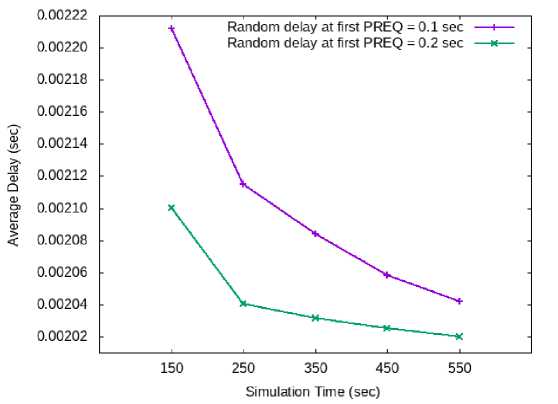
Fig. 1. Relationship between average delay with time
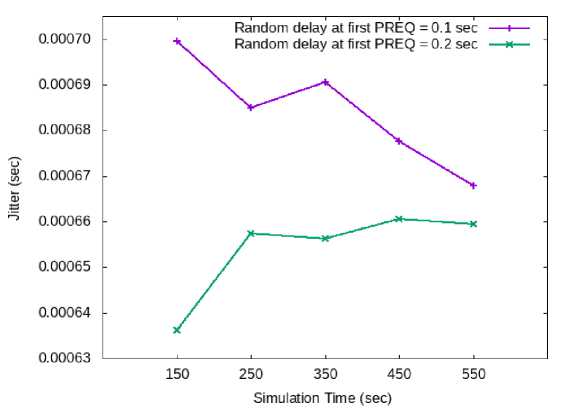
Fig. 2. Relationship between jitter with time
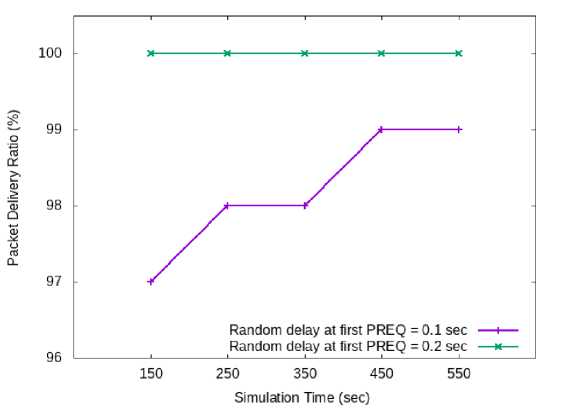
Fig. 3. Relationship between PDR with time
> Throughput
Throughput with varying simulation time for ‘Random Delay at First PREQ’ has been shown in figure 4. Throughput of the wireless mesh network with using the value of ‘Random Delay at First PREQ’0.1 is increasing from 39.97 to 40.80 Kibps. The ‘Random Delay at First PREQ’ at 0.2 sec, throughput is almost constant (41.1 Kibps) with varying simulation time
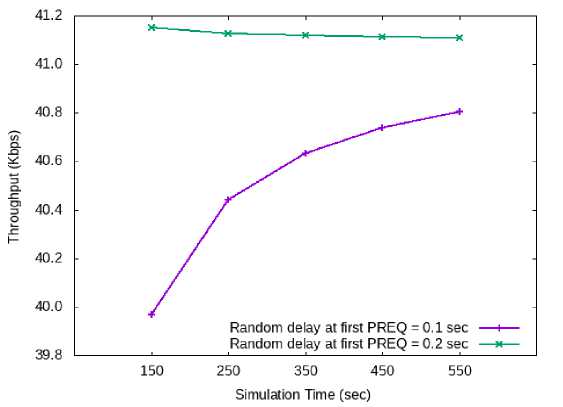
Fig. 4. RelationshipbetweenThroughputwithtime
7. Conclusion and Future Scope
The reason behind the better performance of the wireless mesh network with the value of ‘Random Delay at First PREQ’ = 0.2 sec is to provide sufficient time to re-establish some features of clients and neighbors to transmit the next PREQ to the server during the path discovery process. The analysis' findings indicate that WMN technology is a cutting-edge innovation with broad applications in the sectors of computer networks and telecommunications. Routing protocols play a key role in improving WMNs' credibility. The effectiveness and dependability of the network can be increased by using the appropriate routing protocol. Some suggestions include the need for an analytical study and the avoidance of controlling routing procedures. Routing protocols should be able to preserve, among other things, latency, PDR, jitter, and throughput in terms of QOS.
Furthermore,on the other hand, the increased latency caused by discovering a path must be overcome with reactive routing. There are several other challenges, such as an increase in the pace of mobility.Some of these studies should be carried out in the future to produce WMN communication that is both dependable and scalable. Future work should also include more simulation and analytic studies of protocols concerningnetworks.
Список литературы Performance Analysis of HWMP Protocol in Wireless Mesh Network
- I.F. Akyildiz and X. Wang "Wireless Mesh Networks", UK: Wiley,2009,pp. 1-283.
- W. S. Conner, J. Kruys, K. Kim, J.C. Zuniga, "IEEE 802.11s Tutorial" , presented at IEEE 802 Plenary, Dallas TX, Monday, Nov 13, 2006, tutorials/nov06/802.11s - Tutorial - r5.pdf.
- Ramonaguerocalvo, Jesus perez campo "Adding multiple interface support in NS-2" , University of cantabaria, January 2007.
- Tom Imboden, Kemal Akkaya , Zach Moore, "Performance evaluation of wireless mesh networks using IEEE 802.11s and IEEE 802.11n" , IEEE International conference on communication (ICC) , June 2012, pp. 10-15.
- Pan Li, Nicola Scalabrino, Yuguang (Michael) Fang , Enrico Gregori and Imrich Chlamtac, "How to Effectively Use Multiple Channels in Wireless Mesh Networks" , IEEE TRANSACTIONS ON PARALLEL AND DISTRIBUTED SYSTEMS, VOL.20, NO.11, NOVEMBER 2009, pp.1641-1652
- DARPA INTERNET PROGRAM PROTOCOL SPECIFICATION, https://tools.ietf.org/rfc/rfc791.text
- Azhar Hussain Mozumder, Tapodhir Acharjee, Sudipta Roy, " Scalability performance analysis of BATMAN and HWMP protocols in wireless mesh networks using NS-3" , International conference on Green Computing Communication and Electrical Engineering (JCGCCEE), March 2014, pp.1-5
- A. Neumann, C. Aichele ,M.Lindner and S .Wunderlich, Better Approach To Mobile Ad-hoc networking (B.A.T.M.A.N)" , Work in Progress Technical Report , [online] . Available: http://tools.ietf.org/id/draft-wunderlich-openmesh-manet-routing-00.text2008.
- HWMP specification, IEEE P802.11 Wireless LANs - Technical Report https://mentor.ieee.org/802.11/public/06/11-06-1778-01-000s-hwmp-specification.doc[online]
- Mare Esquius Motote, IEEE 802.11s Mesh Networking Evaluation under NS-3", PROJECT FINAL DE CARRERA, April 2011, pp.206-111.
- W. Zhang, Z.Wang, S. K. Das, and M. Hassan, Wireless Mesh Networks: Architecture sand protocols. NewYork: Springer, 2008.
- F. Akyildizand X. Wang,"Wireless Mesh Networks: A Survey,"Computer Network sand ISDN Systems, Vol. 47, No. 4, 2005, pp.445-487.
- IEEETGs, Status of Project IEEE 802.11s, 2011.http://www.ieee802.org/11/Reports/tgs_update.htm
- M.Bahr,"Update on the Hybrid Wireless Mesh Protocol of IEEE 802.11s," IEEE Conference on Mobile Adhoc and Sensor Systems, Pisa,2007,pp.1-6.
- MSIslam, MM.Alam, Md.Abdul Hamid, EFT:a hight hrough put routing metricfor IEEE 802.11s wireless meshnetworks, Annals of Telecommunications Volume 65, Numbers 5-6, 247-262, 2010.
- Malte Cornils, Michael Bahr, Thomas Gamer, Simulative Analysis of the Hybrid Wireless Mesh Protocol (HWMP), European Wireless Conference, 2010
- Yu-JinSon, Sung-Hee Leeand Young-Bae Ko,"Session-oriented Adaptive Routing for Improving Path Stability in WLAN based Mesh Networks," 13th International Conference on Advanced Communication Technology (ICACT)2011, Phoenix Park, Korea, Feb.2011.
- B. Nassereddine, A. Maach, S. Bennani, The Scalability of The Hybrid Protocolin Wireless Mesh Network 802.11s, Mediterrannean Microwave Symposium (MMS), 2009.
- Abolhasan M., Wysocki T. and Lipman J., Performance Investigation onthree-classes of MANET Routing Protocols, in the proceedings of Asia-Pacific Conference on Communications, 03-05 Oct. 2005 Page(s):774 -778
- AdyaA, Bahl P, Padhye J,Wolman A and Zhou L 2004 A multi-radiounification protocol For IEEE802.11 wireless networks. In Proc. Annual International Conferenceson Broadband Networks (BroadNets).
- R. Draves, J. Padhye and B. Zill, Comparisons of routing metrics forst aticmultihop Wireless Networks. In Proc.ACM Annual Conferenceof the Special Interest Group on Data Communication (SIGCOMM),pp.133–144.2004
- Arafatur Rahman, Saiful Azad, Farhat Anwar, Integrating Multiple Metrics to Improve the Performance of a Routing Protocol over Wireless Mesh Networks, International Conferenceon Signal Processing Systems, 2009.
- Qualnet-5.1 network simulator http://www.scalable-network.com/

